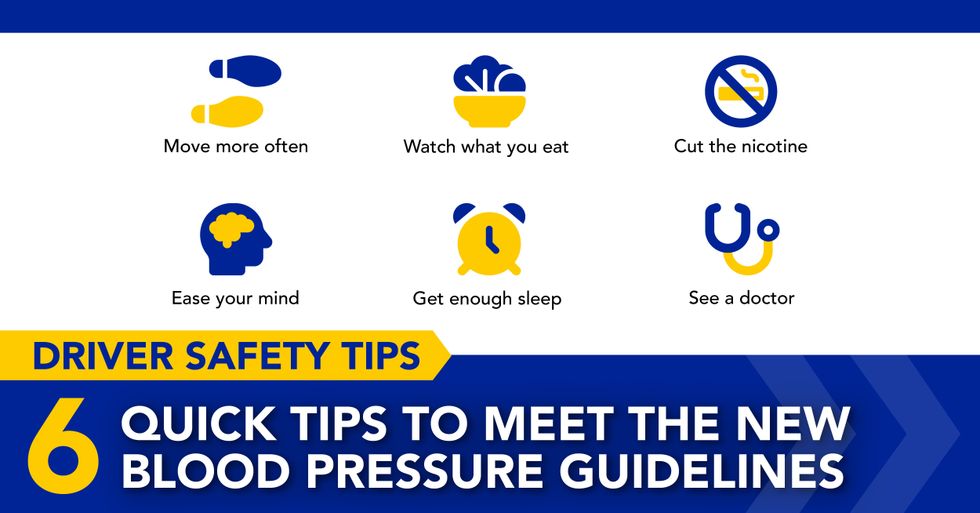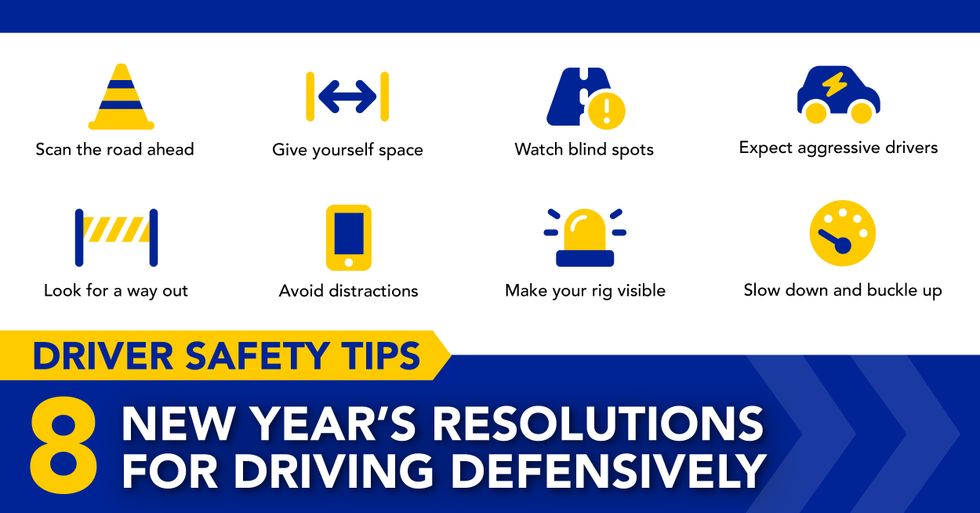The Hidden Link Between Maintenance and Driver Safety
Regular preventive maintenance (PM) keeps a vehicle’s critical systems running properly, which has a direct impact on driver safety.
Ensuring that essential components, such as brakes, tires, steering, lighting and electronics, are working reduces the risk of accidents, improves vehicle handling and control, and keeps drivers comfortable on the road. A strong PM program also helps prevent over-the-road failures, which means fewer distractions and less stress for drivers.
Preventive Maintenance and Vehicle Control
Poorly maintained brake systems can reduce braking capacity and stopping distance in Class 8 trucks, and brake-related issues are among the top out-of-service violations found during roadside inspections. Regular brake inspections identify pad and rotor wear before braking performance is compromised. Penske replaces brake linings well before they reach the Department of Transportation’s (DOT’s) minimum standard of 1/4 inch, typically between 5/16 and 3/8 of an inch.
Tire condition also plays a crucial role in driver safety. Tires that are inflated to the correct pressure and have adequate tread depth maintain traction and help prevent blowouts. Underinflated or worn tires not only wear faster but also increase the likelihood of hydroplaning or skidding, especially in wet or icy conditions. Penske recommends replacing tires before they reach the DOT minimum tread depth requirements and pulls steer tires at 5/32 and drive and trailer tires at 3/32.
Steering and suspension systems directly affect control and stability. Worn shocks, struts or bushings can make handling more difficult and increase driver fatigue. Regular inspections ensure smoother handling and more consistent contact with the road.
Electronic Systems
Battery and charging systems power everything from ignition and lighting to anti-lock brakes and driver-assist systems. A failing battery or alternator can lead to dim headlights, slow engine cranking or flickering dashboard lights. Issues can also escalate into a complete electrical failure or sudden power loss.
Penske’s technicians regularly check batteries, alternators and charging systems. Checking voltage output, cable connections, and the alternator’s charging rate ensures systems receive consistent power. Preventive maintenance can also catch corrosion, worn drive belts or weak batteries before they lead to a no-start situation or electrical failures.
HVAC Systems and Driver Comfort
Heating, ventilation and air conditioning systems keep drivers comfortable, which contributes to safety. A properly functioning HVAC system helps maintain temperatures in the cab, which helps reduce driver fatigue and can improve concentration. In cold or humid conditions, HVAC systems help defrost and dehumidify the windshield, which ensures clear visibility.
Lighting, Visibility and Awareness
Lighting systems, including headlights, taillights, brake lights, and turn signals, ensure that drivers can see the road ahead, potential obstacles and pedestrians. Dim or burned-out bulbs can drastically reduce night visibility or confuse other drivers.
Windshield wipers and washer systems are also vital for maintaining visibility. Worn wiper blades can’t clear the windshield effectively, reducing vision during rain or snow. Replacing blades regularly and keeping washer fluid levels topped off are simple preventive steps that greatly enhance visibility and driver awareness, especially in poor weather conditions.
Other Key Systems To Monitor
Several systems play essential roles in maintaining both performance and safety. The cooling system prevents overheating and sudden loss of power. The transmission and drivetrain ensure smooth gear operation and controlled acceleration. The exhaust system prevents harmful fumes from entering the cabin and ensures emissions remain within safe limits.
Penske’s Preventive Maintenance Program
Penske Truck Leasing has a comprehensive, data-driven preventive maintenance program that uses information from telematics, vehicle histories and component failures to tailor preventive maintenance to the individual attributes of a vehicle. Penske’s Dynamic PM® program captures and analyzes maintenance and vehicle data throughout the entire fleet to identify problems early.
Getting ahead of issues can prevent more extensive issues, reduce roadside breakdowns, limit exposure to roadside hazards, and ensure equipment is safe and reliable.


